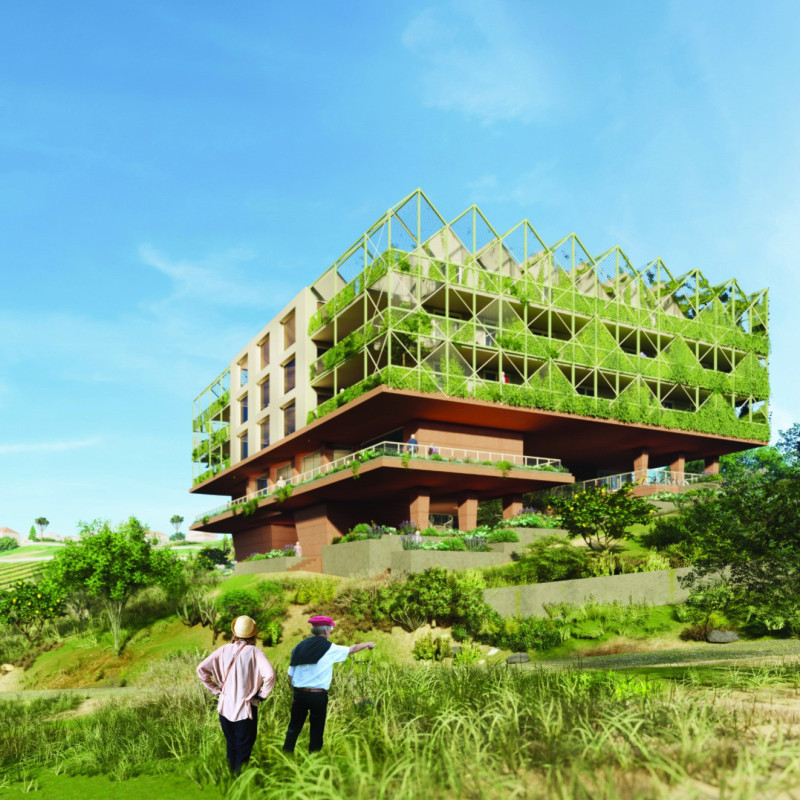5 key facts about this project
The project incorporates a harmonious blend of spaces, facilitating both private and public interactions. At the heart of the design is a series of interconnected areas that promote engagement, collaboration, and relaxation. The architecture utilizes a careful arrangement of communal spaces, such as open courtyards and gathering spots, designed to encourage social interaction. This thoughtful spatial organization emphasizes the importance of community in contemporary architecture.
One of the standout features of this project is its commitment to sustainability. The design incorporates a variety of eco-friendly strategies, employing materials that reduce environmental impact while optimizing energy efficiency. Natural resources are harnessed through the incorporation of large windows and strategically placed openings that maximize natural light. This not only enhances the aesthetic appeal but also contributes to a healthier indoor environment, reducing reliance on artificial lighting.
The material palette is a significant aspect of the architectural design, combining durability with visual interest. The use of concrete provides structural integrity, while the incorporation of timber adds warmth and texture to the facade. Glass elements enhance transparency, creating a visual connection between the interior and exterior environments. These materials are judiciously selected to ensure longevity and minimize maintenance, highlighting a pragmatic approach to modern construction.
The architectural design also pays homage to the local vernacular, incorporating elements that resonate with the regional landscape and culture. This sensitivity to context is reflected in the choice of materials and the articulation of facades, which echo the characteristics of traditional buildings while embracing contemporary aesthetics. Such parallels foster a sense of belonging and continuity, linking the new structure to its historical backdrop.
Innovative design approaches underscore the project’s uniqueness. One notable aspect is the incorporation of flexible spaces that can adapt to a variety of functions over time. This versatility not only maximizes the utility of the building but also reflects forward-thinking design principles aimed at future-proofing the architecture. Additional features, such as green roofs and permeable paving, enhance the environmental benefits while contributing to the overall aesthetic of the project.
Attention to detail is evident throughout the design. From carefully selected color schemes that evoke a sense of calm to thoughtfully designed fixtures that enhance usability, every element has been considered in order to contribute to the overall experience of the space. The interplay of light and shadow across the surfaces throughout the day subtly transforms the building’s appearance, providing a dynamic visual narrative that engages occupants.
As one examines the project further, it becomes clear that its design not only meets practical requirements but also enriches the user experience. Each element contributes to a cohesive atmosphere that fosters community engagement and reflects the broader goals of sustainable and responsible architecture.
In-depth exploration of this architectural project reveals layers of meaning and intention. To understand its full potential and the intricacies of its design, readers are encouraged to delve into the architectural plans, architectural sections, and architectural designs available. These resources provide valuable insights into the foundational ideas and innovative concepts that underpin this notable project. For those interested in the evolution of contemporary architecture and design, this presentation serves as an informative case study worth exploring.


























